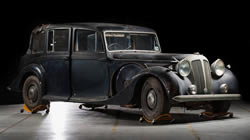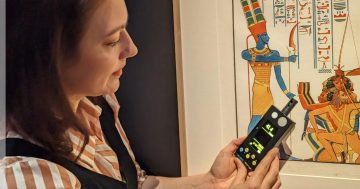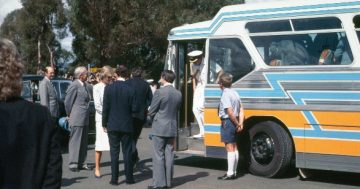 One of the two vehicles that transported Queen Elizabeth on her first tour of Australia in 1954 has been meticulously restored and revived by conservation experts at the National Museum of Australia (NMA) in Canberra.
One of the two vehicles that transported Queen Elizabeth on her first tour of Australia in 1954 has been meticulously restored and revived by conservation experts at the National Museum of Australia (NMA) in Canberra.
The rare 1948 Daimler landaulette was acquired by the National Museum in 2009 and since then has been the focus of one of the most complex projects ever undertaken by its conservators.
The work involved assessing more than 30,000 components, carefully deconstructing much of the car and then rebuilding it piece by piece.
Director of the National Museum, Mathew Trinca said the Queen’s 58-day tour covered seven States and Territories and Australians flocked to see her — an estimated 75 per cent of the population witnessed the Royal progress at least once.
“The Daimler 36HP Hooper Bodied landaulette was used extensively by the Queen during the Royal Tour and became synonymous with this significant event in Australian history,” Dr Trinca said.
“It was the first time a reigning monarch had visited this country.”
He said the museum was proud to have in its collection one of only two surviving Daimlers that transported the Queen through capital cities and rural towns around the country.
Senior Large Technology Conservator at the NMA, Nathan Pharaoh, said the vehicle had tested and challenged his team.
“The conservation project involved combining a range of innovative techniques, matching traditional trade skills with modern technologies and materials,” Mr Pharaoh said.
“Our approach has established a new benchmark for hybrid automotive museum practice,” he said.
The Daimler is one of six originally commissioned by Prime Minster, Ben Chiefly for a scheduled tour of Australia by King George VI in 1949, which was cancelled at the last minute due to the King’s ill health.
With the vehicles already paid for, two were sold on to the Maharajah of Mysore in India and the remaining four became part of the Government’s car pool. They were refurbished for the Queen’s 1954 Australian tour.
The Daimler will be displayed in the Gandel Atrium at the National Museum in Canberra until 5 September.






